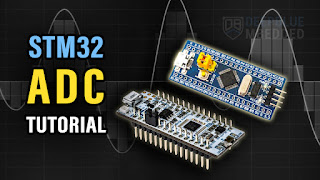How to flash FPGA?
Flashing an FPGA refers to the process of loading a configuration bitstream (a binary file that defines the FPGA's functionality) into the FPGA's non-volatile memory or directly into its configuration memory. This process allows the FPGA to execute the desired design. Below are the general steps to flash an FPGA:
1. Prepare the Bitstream File
Generate the Bitstream: Use your FPGA design tools (e.g., Xilinx Vivado, Intel Quartus, Lattice Diamond) to synthesize, place, route, and generate the bitstream file (e.g.,
.bitfor Xilinx,.soffor Intel).Verify the Bitstream: Ensure the bitstream is error-free and corresponds to the correct design.
2. Connect the FPGA to Your Computer
Programming Cable: Use a compatible programming cable (e.g., Xilinx JTAG programmer, Intel USB-Blaster, or Lattice programmer).
Connect the Cable: Attach the cable to the FPGA's programming header (usually JTAG) and connect the other end to your computer (USB or Ethernet).
Power the FPGA: Ensure the FPGA board is powered on.
3. Open the FPGA Vendor's Programming Tool
Xilinx: Use Vivado Hardware Manager or iMPACT.
Intel: Use Quartus Programmer.
Lattice: Use Lattice Diamond Programmer or Lattice Propel.
Other Vendors: Use the vendor-specific programming tool.
4. Detect the FPGA
Scan for Devices: In the programming tool, scan for connected devices. The FPGA should appear in the list of detected hardware.
Check Connections: If the FPGA is not detected, verify the cable connections, power supply, and compatibility of the programming cable.
5. Load the Bitstream File
Add the Bitstream: Load the generated bitstream file into the programming tool.
Select Programming Mode:
JTAG Mode: For temporary configuration (volatile, lost on power-off).
Flash Mode: For permanent configuration (non-volatile, retained after power-off).
6. Program the FPGA
Start Programming: Initiate the programming process. The tool will transfer the bitstream to the FPGA.
Monitor Progress: Watch for progress indicators or logs to ensure the process completes successfully.
Verify Programming: Some tools allow you to verify the bitstream after programming.
7. Test the Design
Reset the FPGA: If necessary, reset the FPGA to start executing the new design.
Validate Functionality: Test the FPGA's behavior to ensure it matches the expected design.
8. (Optional) Program Non-Volatile Memory
If you want the design to persist after power cycles:
Flash Memory: Program the bitstream into the FPGA's external or internal non-volatile memory (e.g., SPI flash, QSPI flash).
Boot Configuration: Configure the FPGA to load the bitstream from the non-volatile memory on power-up.
Example: Flashing a Xilinx FPGA Using Vivado
Open Vivado and launch the Hardware Manager.
Connect the JTAG cable and power on the FPGA board.
Click Open Target → Auto Connect to detect the FPGA.
In the Hardware Manager, right-click the FPGA device and select Add Configuration Memory Device (if programming flash).
Load the bitstream file (
.bitor.mcsfor flash).Click Program Device to flash the FPGA.
Example: Flashing an Intel FPGA Using Quartus
Open Quartus and launch the Programmer.
Connect the USB-Blaster cable and power on the FPGA board.
Click Auto Detect to identify the FPGA.
Add the bitstream file (
.sofor.poffor flash).Select the programming mode (JTAG or Active Serial for flash).
Click Start to program the FPGA.
Troubleshooting Tips
FPGA Not Detected: Check cable connections, power supply, and compatibility.
Programming Failed: Verify the bitstream file and ensure the FPGA is not locked or in use by another process.
Flash Programming Issues: Ensure the correct flash memory device is selected and the bitstream is compatible with the flash memory.
By following these steps, you can successfully flash an FPGA and deploy your design. The exact process may vary slightly depending on the FPGA vendor and tools used. Always refer to the vendor's documentation for specific instructions.




评论
发表评论